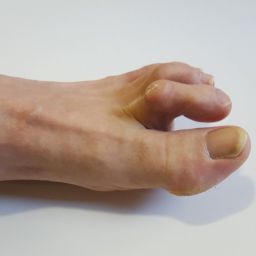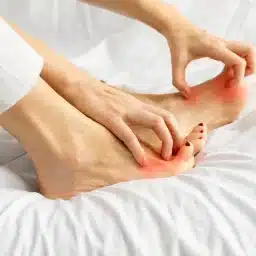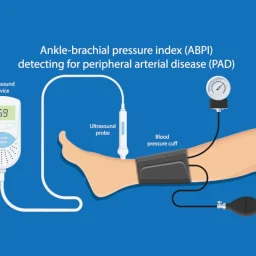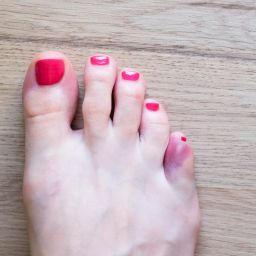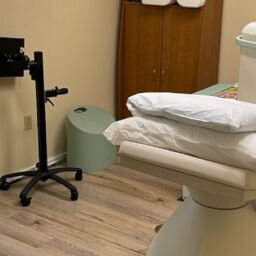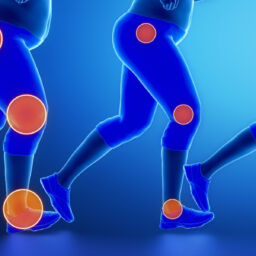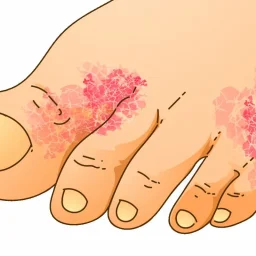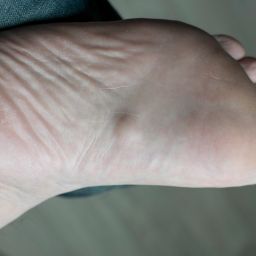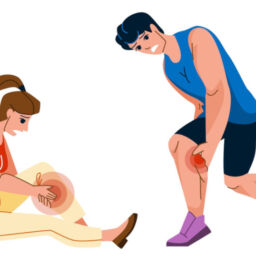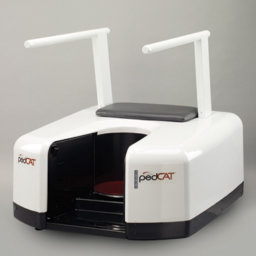
Podiatrists at Certified Foot and Ankle Specialists, frequently see patients experiencing pain on the top of their foot. Understanding the tendons in top of foot and how they function is crucial for recognizing when something goes wrong and seeking appropriate treatment.
Anatomy of Tendons in Top of Foot
The tendons that run along the top of your foot are called extensor tendons. These vital structures connect the muscles in your lower leg to the bones in your toes and foot. The extensor tendons are responsible for lifting your toes and flexing your foot upward, enabling you to walk, run, and perform daily physical activities. Unlike the tendons in your hands, which are more protected, the extensor tendons in your foot lie close to the skin surface, making them more vulnerable to injury and inflammation. This exposed position contributes to their susceptibility to various conditions, particularly extensor tendonitis.
What is Extensor Tendonitis?
Extensor tendonitis, also known as foot tendonitis, occurs when the extensor tendons become inflamed or irritated. This condition typically develops gradually and causes pain on the top of your foot, especially during movement or when pressure is applied.
Common symptoms of extensor tendonitis include:
- Sharp or aching pain on the top of your foot
- Swelling and tenderness along the tendon pathway
- Increased pain during physical activities or walking
- Stiffness, particularly in the morning
- Difficulty with toe movement and reduced range of motion
- Pain that worsens when wearing shoes that are too tight
Causes of Extensor Tendon Problems
Several factors can contribute to inflammation and injury of the tendons in top of foot:
Mechanical Factors:
- Wearing shoes that are too tight, creating pressure on the extensor tendons
- Sudden increase in physical activities without proper conditioning
- Repetitive motions that strain the foot, such as running or jumping
- Flat feet or high arches that alter normal foot mechanics
Structural Issues:
- Foot deformities that place abnormal stress on tendons
- Previous injuries that have altered foot function
- Age-related changes in tendon elasticity and strength
Medical Conditions:
- Inflammatory conditions like arthritis
- Stress fractures that affect surrounding soft tissues
- Systemic diseases that impact tendon health
Diagnosis and Evaluation
At Certified Foot and Ankle Specialists, our comprehensive evaluation begins with a detailed medical history and physical examination. We assess your foot structure, range of motion, and identify specific areas of tenderness along the extensor tendons.
Diagnostic imaging may include X-rays to rule out stress fractures or other bone abnormalities, and sometimes MRI or ultrasound to visualize soft tissue structures more clearly. This thorough approach ensures we identify the exact cause of your foot pain and develop the most effective treatment plan.
 Treatment Options for Extensor Tendonitis
Treatment Options for Extensor Tendonitis
Conservative Home Treatments
Initial treatment for mild extensor tendonitis often involves conservative home treatments:
Rest and Activity Modification: Temporarily reducing physical activities that aggravate symptoms allows the inflamed tendons to heal. This doesn’t mean complete inactivity, but rather avoiding repetitive motions that cause pain.
Ice Therapy: Apply ice for 15-20 minutes several times daily during the acute phase to reduce inflammation and pain. Always use a barrier between ice and skin to prevent frostbite.
Proper Footwear: Wear shoes with adequate room for your toes and avoid tight-fitting footwear that compresses the extensor tendons. Athletic shoes with good arch support and cushioning are typically recommended.
Medical Interventions
When home treatments aren’t sufficient, professional medical intervention becomes necessary:
Anti-Inflammatory Medications: Nonsteroidal anti-inflammatory drugs (NSAIDs) can help reduce inflammation and manage pain. However, these should be used under medical supervision, especially for extended periods.
Physical Therapy: A structured physical therapy program focuses on gentle stretching exercises, strengthening activities, and techniques to improve range of motion. Therapists also teach proper biomechanics to prevent future injuries.
Injection Therapy: In severe cases, corticosteroid injections may be considered to reduce inflammation, though this treatment requires careful evaluation due to potential risks to tendon integrity.
Advanced Treatment Options
For persistent or severe cases that don’t respond to conservative treatment, our specialists may recommend:
- Custom orthotic devices to correct biomechanical abnormalities
- Immobilization with a walking boot or cast in severe cases
- Surgical intervention for chronic conditions with tendon damage
Prevention Strategies
Preventing extensor tendonitis involves several key strategies:
Footwear Selection: Choose properly fitting shoes with adequate toe room and good arch support. Replace worn athletic shoes regularly, typically every 300-500 miles for runners.
Gradual Activity Progression: When starting new physical activities or increasing intensity, progress gradually over several weeks to allow your tendons to adapt.
Strength and Flexibility: Maintain good lower leg and foot strength through targeted exercises. Regular stretching helps maintain tendon flexibility and reduces injury risk.
Biomechanical Assessment: If you have flat feet, high arches, or other structural abnormalities, consider professional evaluation for custom orthotics or supportive devices.
When to Seek Professional Care
While mild foot pain may respond to home treatments, certain symptoms warrant immediate professional evaluation:
- Severe pain that limits walking or daily activities
- Swelling that doesn’t improve with rest and ice
- Symptoms persisting longer than a few days
- Signs of infection, such as warmth, redness, or fever
- Numbness or tingling in the foot
Recovery and Return to Activity
Recovery from extensor tendonitis varies depending on severity and individual factors. Mild cases may resolve within a few weeks with proper treatment, while more severe conditions might require several months of rehabilitation.
Our team of podiatrists at Certified Foot and Ankle Specialists works closely with patients to develop personalized recovery plans. We monitor progress through follow-up appointments and adjust treatment strategies as needed to ensure optimal outcomes.
Returning to full physical activities should be gradual and guided by symptom improvement. We typically recommend a phased approach, starting with low-impact activities and progressively increasing intensity as tolerated.
Expert Care at Certified Foot and Ankle Specialists
Understanding the complex anatomy and function of tendons in top of foot requires specialized knowledge and experience. Our board-certified podiatrists have extensive training in diagnosing and treating extensor tendonitis and related foot conditions.
We utilize the latest diagnostic technologies and evidence-based treatment approaches to provide comprehensive care for our patients. From conservative management to advanced surgical techniques, we offer the full spectrum of treatment options tailored to individual needs.
Don’t let foot pain limit your activities or quality of life. If you’re experiencing symptoms related to extensor tendonitis or other foot conditions, contact Certified Foot and Ankle Specialists today to schedule a consultation. Our experienced team is committed to helping you achieve optimal foot health and return to the activities you enjoy.
Early intervention often leads to better outcomes and faster recovery, so don’t delay seeking professional care when foot pain persists or interferes with your daily routine.
Frequently Asked Questions About Tendons in Top of Foot
Q. What are the main tendons in top of foot?
A.The primary tendons are the extensor tendons, which include the extensor hallucis longus (controls the big toe), extensor digitorum longus (controls the four smaller toes), and extensor digitorum brevis. These tendons work together to lift your toes and flex your foot upward during walking and other physical activities.
Q. How do I know if I have extensor tendonitis?
A. Common signs include pain on the top of your foot that worsens with activity, swelling along the tendon pathway, stiffness especially in the morning, and difficulty moving your toes through their full range of motion. The pain typically increases when wearing shoes that are too tight or during repetitive motions like running.
Q. Can extensor tendonitis heal on its own?
A. Mild cases of extensor tendonitis may improve with proper home treatments including rest, ice therapy for 15-20 minutes several times daily, and avoiding activities that aggravate symptoms. However, persistent or severe cases require professional evaluation and treatment to prevent chronic problems.
Q. How long does it take for extensor tendonitis to heal?
A. Recovery time varies significantly based on severity and individual factors. Mild cases may resolve within 2-4 weeks with appropriate treatment, while more severe conditions might require 2-3 months of comprehensive rehabilitation. Following your podiatrist’s treatment plan closely helps ensure optimal recovery.
Q. What shoes should I wear with extensor tendonitis?
A. Choose shoes with a roomy toe box that doesn’t compress the tendons. Athletic shoes with good arch support and cushioning are typically recommended. Avoid high heels, tight-fitting shoes, or footwear that places pressure on the top of your foot during the healing process.
Q. Is it safe to exercise with extensor tendonitis?
A. While complete rest isn’t always necessary, you should modify your physical activities to avoid aggravating the condition. Low-impact exercises like swimming or cycling may be acceptable, but high-impact activities involving repetitive motions should be avoided until symptoms improve. Always consult your podiatrist before continuing exercise routines.
Q. When should I see a podiatrist for foot tendon pain?
A. Seek professional care if pain persists longer than a few days despite home treatments, if you experience severe pain limiting daily activities, or if you notice signs of infection such as warmth, redness, or fever. Early intervention by a qualified podiatrist often leads to better outcomes.
Q. Can custom orthotics help with extensor tendonitis?
A. Yes, custom orthotics can be highly effective, especially for patients with flat feet or high arches that contribute to abnormal stress on the extensor tendons. These devices help correct biomechanical abnormalities and redistribute pressure, reducing strain on the tendons in top of foot.
Q. Are there any complications if extensor tendonitis goes untreated?
A. Untreated extensor tendonitis can lead to chronic pain, permanent tendon damage, reduced range of motion, and compensatory movement patterns that may cause problems in other areas of your foot or leg. Some patients develop stress fractures due to altered gait mechanics.
Q. What’s the difference between extensor tendonitis and a stress fracture?
A. Both conditions cause pain on the top of your foot, but stress fractures typically produce more localized, severe pain that worsens with weight-bearing activities. Extensor tendonitis pain is usually more diffuse along the tendon pathway and may improve somewhat with gentle movement. Professional evaluation with imaging studies can definitively distinguish between these conditions.
Q. Can nonsteroidal anti-inflammatory drugs (NSAIDs) cure extensor tendonitis?
A. While NSAIDs can help reduce inflammation and manage pain, they don’t cure the underlying condition. These medications should be part of a comprehensive treatment approach that includes activity modification, proper footwear, and potentially physical therapy. Long-term NSAID use requires medical supervision.
Q. Will I need surgery for extensor tendonitis?
A. Most cases of extensor tendonitis respond well to conservative treatment and don’t require surgery. Surgical intervention is typically reserved for chronic cases that haven’t improved after several months of appropriate non-surgical treatment, or when there’s significant tendon damage that won’t heal with conservative measures alone.
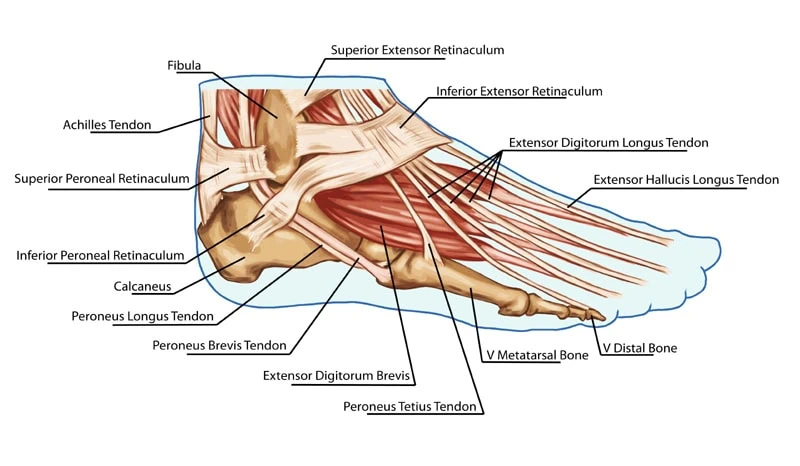 Treatment Options for Extensor Tendonitis
Treatment Options for Extensor Tendonitis